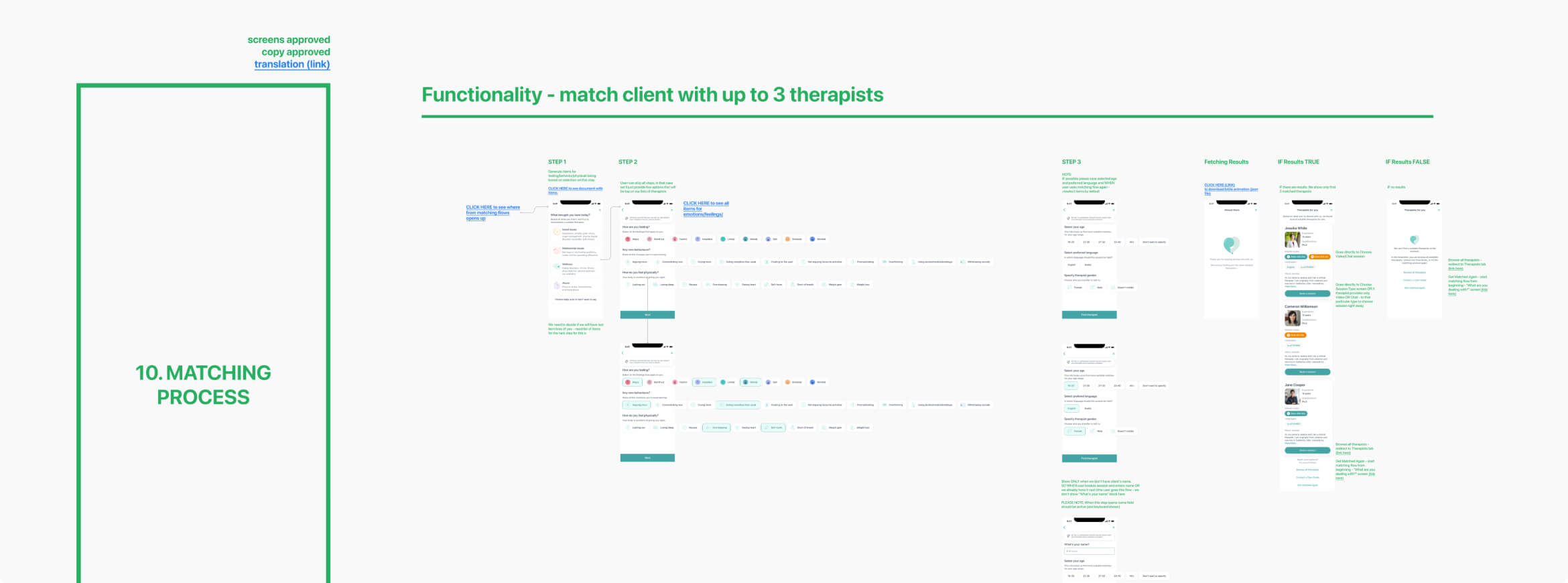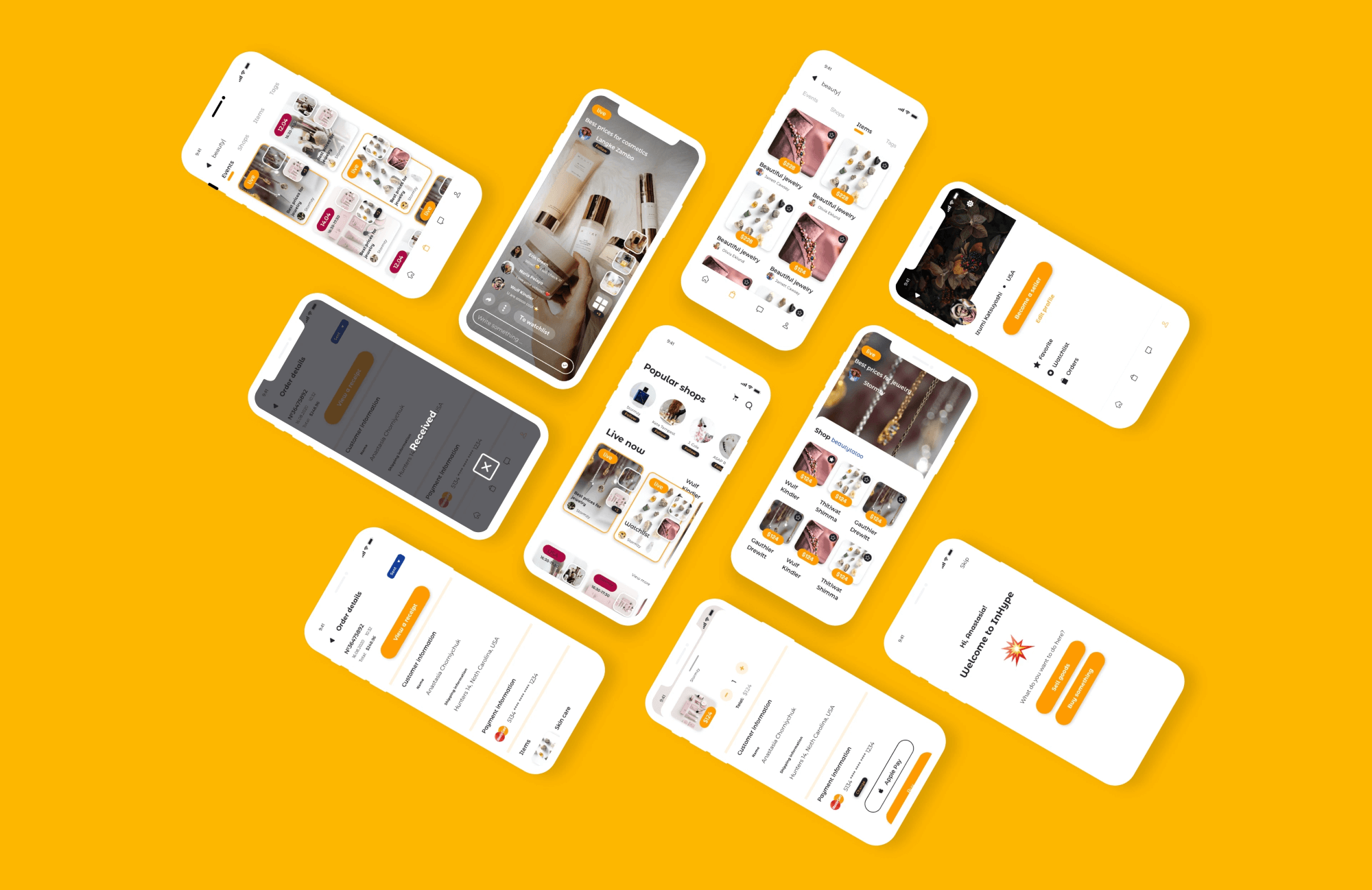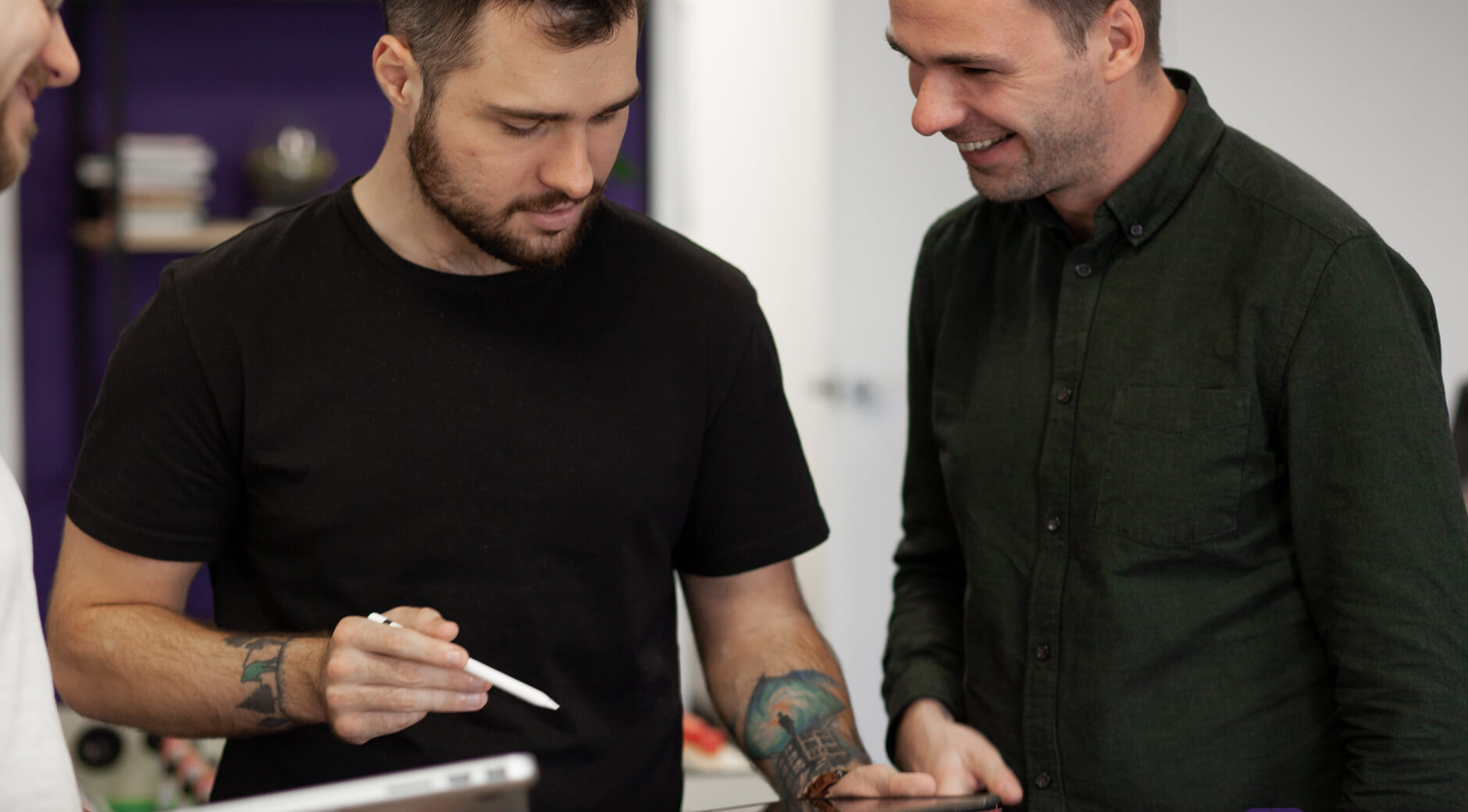От халепа... Ця сторінка ще не має українського перекладу, але ми вже над цим працюємо!

Everything you need to know about mobile application development lifecycle

Supernerd
/
Developer
9 min read
There is no better way to support a business idea than developing a mobile app for it. This is widely supported by stats projecting that by 2023, mobile apps will generate more than $935 billion in revenues via paid downloads and in-app advertising. In this respect, custom app development is a popular request. This is reasonable since only properly built applications covering all manner of business requirements can fit your market niche.
Such demand produces an illusion that app creation is a half day’s work. There’s nothing to it but building a few things, testing them quickly, and submitting the final product to an app store. In our experience, this approach never works, even if you only need rapid MVP development. Custom application development is a process with various stages, and each one is essentially important. Let’s look through them to find out how to make an app that makes a difference.
Article content:

Vision and strategy
New ideas for seamless social networking, cost-conscious ride-hailing, or the limitless ability to listen to music or podcasts are behind every next TikTok, Uber, or Spotify. To make a difference, though, bright ideas are not enough. During the first stage of custom app development, business owners have to focus on a vision and strategy for the product.
With product vision, business owners try to shape their app’s future outcome and its impact on the target audience. Articulating product vision is always a bit of a leap into the unknown, so try the following to mitigate this effect:
- Be specific of purpose and ask all the important ‘why’ questions. You may start with why do people need your app?
- Think big. It will have to inspire a lot of people, investors, the development team, and customers
- Be ready to disrupt and pivot. Even the most brilliant ideas need fine-tuning
- Align your idea with tech trends — it can save development costs
- Be ready to relentlessly communicate and protect your idea but be flexible if someone can improve your product design
Product strategy lays out a sequence of actions to be taken with mobile application development services to bring product vision to life. Product vision explains the ideas behind the app, while product strategy implements them.

Discovery and research
Following the strategic phase, the discovery phase finds evidence that the next stages of custom application development won’t be a wasted effort. This goal can be approached in two ways:
- Discover in detail what are the characteristics the mobile app should have so that the customer will really need and love it. It covers researching the demand, monetization strategy, and the way in which a mobile app development team will work on this solution. Question to ask yourself here: Will the customer choose to use it? What competitive advantages do we have in store?
- Ensure that the solution your team will be working on can result in a robust and reliable app. Question to ask yourself here: Can we build this mobile app? Will this mobile solution work for our business?
Numerous discovery techniques are used in mobile application development services — discovery planning, framing, ideation, discovery prototyping, testing, and transformation. What is important at this stage is that actual ideas better be validated against actual users. Usually, the outcome of this stage is the first version of a minimum viable product (MVP). Keep reading to learn what it takes to develop the first MVP.

It’s majesty, UX design
UX design and development is aimed at the multitude of touchpoints, determining how a customer will interact with your mobile app and your business as a whole.
To achieve that, the app development teams should strictly follow the instructions set by two front-runners. Designing for Android and iOS is a regulated and well-prescribed process. Those principles explain and outline how to deal with all the facets of app’s quality like functionality, security, stability, performance and visual experience, and more. Moreover, they emphasize that content is paramount in terms of UX design, so it has to go alongside clear and distinct design elements.
This stage will typically cover building information architecture, workflows, and wireframes. Working on information architecture means defining the content types and functions of your app. It often involves the following steps:
- Identification of every piece of content that will communicate a business value
- Categorization of the content. Defining where and how it will be placed within your app design should be presented in the design
- Structuring and organizing the ideas into blocks and mapping out the relationship between them

UX process for the Ayadi case study>
While working on workflows and wireframes, a good UX designer must feel comfortable with many different prototyping tools and be able to apply the correct one for the following tasks:
- Specify where elements like boxes, buttons, input fields, images, and the content will be placed
- Work out the navigation paths through which the user will navigate your mobile app

User interface design
In the mobile application development lifecycle, user interface design (UI) is needed to ensure that all interface elements are easily accessible, properly used, and correctly understood. UI design combines principles from information architecture, visual design, and interaction design to create a consistent interface layout.
Not less critical as in the case with the UX design, Human Interface Guidelines (HIG) by Apple and the Material design principles from Android are a must in terms of UI best practices for the app development teams.
In the case with Android, among others, app development experts should make sure the app offers an interactive UI, quickly responding to the user’s input, and runs quickly and smoothly. The guidelines also dictate the necessity to provide localization and internationalization opportunities.
Apple HIG provides explicit design recommendations that should be implemented in terms of user interaction, system capabilities, visual design, icons, images, and bars, as well as views, controls and extensions. Mind that the exact following of these recommendations will greatly influence the chances of your app being easily published on the App Store.
Great UI design is built around the accurate perception of your users and listening to their needs. No tendencies are more critical than user preferences. When building an interface, a UI designer should take the following into account :
- App’s icon is the first thing users learn about your app. Never neglect this first impression
- Balance between aesthetics and simplicity
- Content-first approach is worth following and should be placed in the center of the user journey
- Minimalistic design is a trendy approach that can considerably improve UI
- Style guide can greatly aid your app’s usability
- Visual design matters, as it can engage users through composition, typography, and visual brand expression

Mobile app UI for inHype case study>
App development and approaches
Even the brightest mobile app ideas will remain just that if you can’t build and launch your app. That’s why the engineering part is at the heart of a successful custom app development project. When someone refers to app development as a stage within a mobile app development lifecycle, they usually mean the front-end development of native iOS and Android apps or cross-platform development. Either way, your engineering team has to be able to deal with the back-end development (web API and server).
Which approach to mobile app development do businesses choose more often, cross-platform or native? While companies usually try to decide on the approach proceeding from the business requirements, experienced mobile app development teams will suggest going with native app development. It’s said that the cross-platform development approach is usually less expensive as if it takes half as much time as native apps. But usually, it’s no more than only 20-30 percent faster when it comes to practice.
It’s true that when estimating, the project timeline might seem shorter. But as a matter of fact, the project timeline usually will be longer. Unlike native development, when two developers work parallelly and independently, only one developer works on a cross-platform app. Even if your team counts two or three of them, they won’t be able to work independently anyway.

Continuous development
In the context of custom mobile app development, it’s worth mentioning software methodologies and practices that can increase the chance of success for your mobile project. One such important practice is continuous development.
Continuous development is a stage within a wider concept of continuous integration and continuous delivery pipeline (CI/CD). This kind of pipeline is a continuous process encompassing all stages of the application development life cycle and bringing quality control to every stage. It weaves automation into coding, compiling, building, testing, and packaging mobile applications.
A properly configured pipeline increases the productivity of your mobile app development team, reducing the manual workload and eliminating most manual errors. This ultimately leads to a faster, more agile app development life cycle, so crucial in a highly competitive environment — for instance, in 2020, 143 billion apps were downloaded from Google and Apple app stores. That’s quite a demand.

Quality that must always be assured
Quality assurance (QA) as a part of the mobile app development process is absolutely essential. A mobile app development team has to employ the following types of testing to ensure accuracy of functionality and stability of performance:
- Usability testing
- Performance testing
- Security testing
- Functional testing
- UX testing
- Regression testing
On top of that, in the CI/CD paradigm, continuous testing takes place, a practice of running automated tests against every code commit without human intervention. If your team opts for continuous testing, your engineers will have to automate all the testing they can. Continuous testing makes the testing process faster and eliminates human mistakes. It helps discover risks throughout the app development life cycle, so the team can address them and improve application quality.

Deployment and support
An extremely important stage, true value, and complexity of which is often underestimated. When the development and testing of your mobile app are over, it is time to publish it. Deploying the app to the Google Play Store and Apple App Store connects the app setup to stores with related materials, which typically include the app’s title, screenshots, description, keywords, and launch icon.
At first sight, the app approving process seems comparatively easy, especially with Play Market. If submission rules are followed, the app becomes available within several hours. The same can’t be said for the Apple App Store. After submission, your iOS app will undergo a rigorous review which may take several weeks. To shorten this process, you’d better consult professionals who’ve been there before and can make sure all iOS development guidelines and privacy policies were followed.
Even when the first downloads of your app appear, it’s still too early to call it a day. There will always be features that can be added, and things can be bolstered. Constant monitoring and analytics are required, as well as dialogue with your users to determine the value of your efforts, bringing an increase in conversion rates.

What’s the place of MVP in a mobile app development lifecycle?
Out of all the mobile application development services, the development of a minimum viable product holds particular importance for startup founders. MVP development, in fact, goes through the same stages as a fully-featured mobile app. The main difference is with MVP, it’s never too late to correct the issues without significant waste or worse.
With MVP, the engineering team always tries to test and prove their work, or at least gather information necessary to walk a future mobile app through development stages successfully and cost-effectively. The biggest tasks of an MVP development on a mobile app development project are:
- To learn as much as possible at a lower cost of time and effort than building out an entire mobile product
- To expose potential issues with the idea, tech stack, conversion, and similar of the mobile product so that it won’t be discovered in the final app
- To tackle risks connected with the value, usability, feasibility, or viability of a mobile app
- To show feasibility, especially for startups getting ready for funding rounds
Check out some of the case studies here>
Now we’re ready for the bottom line.
To sum up
As you see, there are a lot of steps to custom mobile app development. The process often seems complex and devastating. And although the abundance of the bright ideas behind each next mobile app never fails to amaze, the mobile app development process should always be consistent and include the essentials. While business founders might be in a hurry to push something out untested, a reliable tech partner like NERDZ LAB ensures all areas are ready for action, with no risk of damaging a brand’s name.

Contact us to launch mobile apps that customers will love and that will work best for your business.



